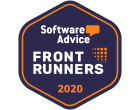In any organization, workforce management software helps in simplifying the mundane activities to maintain a productive workforce. Automating some of the processes like time and attendance, employee benefits, payroll management, etc. helps eliminate human error and ensures talent retention, trained employees, and includes employees in the scheduling process.
Traditionally, workforce management solutions were used to manage staffing schedules. Today, these solutions have evolved from being simple scheduling software to providing smart actionable insights into data that contribute to improving productivity, reducing operational costs, and providing easier ways to manage on-field or mobile employees.
Improved control over their business operations
Now several businesses are gearing towards adopting workforce management software for improved control over their business operations, communications, and efficient scheduling of tasks. Advancements in technology have led to the development of cloud-based workforce management software, which operates as a Software-as-a-Solution. This software is suitable for both large and small businesses. They help in combining data into a single platform, thereby encouraging self-service processes.
Given this increasing demand for workforce management software, there has also been a tremendous increase in the number of vendors in the market, who offer an even wider range of products. This makes it extremely difficult to figure out what solutions are best for you. There are many factors to consider before making a decision, such as a scalability and functionality of the software. To help you choose the best workforce management software, we have compiled a list of factors that one should consider before making a choice:
1. Ease of use and mobility:
To maintain a productive workforce, companies should ensure that the software they are choosing has a user-friendly design. The information should be easily accessible and be compatible to use with a mobile device. An industry where mobility is of utmost importance is the field service industry, where the field service management software provides the field technicians with appropriate information instantaneously. Choosing cloud-based software can be good in this instant, as this ensures that there are no interruptions of the workforce while carrying out the maintenance.
2. Employee Management:
The best part about investing in a workforce management, especially for a sales force management software, is that it allows the tracking of employees effortlessly. This data can act as the attendance record and is compiled at the end of every month to review the payroll and leave management. Moreover, good field service management software has a payroll automation module that helps in streamlining the payroll process and ensures that the payroll, receipts, and reports are generated with ease. The software should be user-friendly and scalable. You should conduct a need assessment and identify the challenges and gaps that need to be addressed.
3. Automated Reporting:
A good workforce management software helps save both time and effort of manually generating the work reports. The system should be able to generate custom reports and prepare for the different variations of the geographical data. Consider a software that offers detailed, real-time reports. Some of the frequently requested reports are job status, inventory analysis, customer feedback, and employee performance.
4. Software Integration:
As a workforce management software cannot provide all the service in an organization, it should be able to integrate with each other to help consolidate business data and provide better information to managers. There are apps for many business management processes like the sales force management software and the field service management software. Employee scheduling, HR management, etc., are now being integrated to facilitate ease of data processing. Thus, it is important to make sure that the workforce management software that you choose will easily integrate with others and work seamlessly.
5. Enhanced Functionality:
Choose a software that has improved functionality and exclusive features. The software should be able to perform different tasks seamlessly. Some software also offers the latest customer engagement technologies through web portals as well as allows customers to engage with the company whenever they want.
Conclusively, look for a software with modular components, scalability as well as the right security to maintain confidentiality and protection. With workforce management software becoming an industry standard, innovation is in no way slowing down. Creative thinking is required to leverage the benefits of the available technologies. In selecting a software that is perfect for your organization, create a wish list of the functions that your company needs and take your time test driving the software prior to purchasing.
Remote workforce management is a key component of managing your employees. Most organizations fail to optimize their remote workforce for productivity and face efficiency issues. Leverage FieldEZ’s field service management software and make sure your in-house employees and your remote employees are well-managed.



